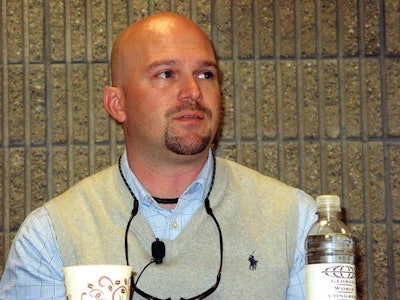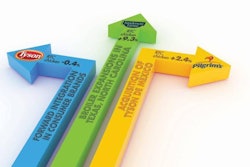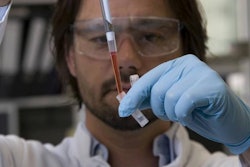
If there is a secret to antibiotic-free (ABF) poultry production, it is that producers are using powerful tools to make their ABF programs successful – in most cases, these tools are old ones just better applied than in the past. Combine those tools with the customized use of prebiotics, probiotics and organic acids, and you have the formula for maintaining competitive performance in ABF poultry production.
In the final analysis, there are no real secrets to successful ABF poultry production. Success boils down to trial and error leading to customized application of non-antibiotic feed additives and the superior execution of the fundamentals of poultry production.
A lot can be learned, however, from the experiences of veterinarians at U.S. poultry companies that have invested in ABF-friendly hatcheries, conducted trials with feed additives and refined live-production management techniques to make antibiotic-free poultry production successful.
Four experts share knowledge of ABF poultry
WATT Global Media presented, “Judicious use of antibiotics in the poultry industry,” which featured the following experts:
- Bruce Stewart-Brown, vice president of food safety and quality, Perdue Foods
- Brian Wooming, senior staff veterinarian, Cargill Turkey Products
- Jeff Courtney, director of veterinary services, Pilgrim’s
- Alastair Thomas, DFM business manager, DuPont
The panel presentation, sponsored by DuPont – Danisco Animal Nutrition, took place during the 2016 International Production and Processing Exposition (IPPE).
“Integrators are changing production practices to meet the demands of the marketplace in the U.S.,” said moderator Terrence O’Keefe of WATT Global Media. “Poultry growers, nutritionists and veterinarians are being challenged to raise birds using fewer antibiotics. Meanwhile, they must maintain good performance and welfare without raising food safety concerns.”
Migration to antibiotic-free poultry production by some producers
The top veterinarian at Pilgrim’s said the company produces ABF broilers at two poultry complexes – one of which is fully dedicated to ABF production and the other with half conventional and half ABF production.
Courtney said, “We are learning, as we transition broiler complexes to ABF production, that adjustments in management must occur for the program to be successful. Some people may expect to be able to continue business as usual when antibiotics are removed from flocks, but it requires a whole change in mindset of paying attention to every little detail of production management.”

Jeff Courtney, director of veterinary services, Pilgrim’s
Perdue Foods is raising approximately 70 percent of its poultry in "no antibiotics ever" (NAE) production and continues its migration to NAE production. Stewart-Brown said some of the company’s hatcheries are achieving lower seven-day mortality in ABF flocks than when antibiotics were being used.
“We’re working hard in the process of migrating to NAE production,” he said, “but it takes a lot of work and preparation. I don’t think that every bird in the United States should be raised under NAE production.”
Managing antibiotic-free poultry production
Antibiotic-free (ABF) poultry production programs succeed or fail based on superior execution of the basics of poultry management, the panelists agreed. There are no silver bullets to make an ABF program successful. Having the right people with the right focus, however, is essential.
Stewart Brown said, “We have been working on a definition of an ABF farm and an ABF farmer to identify what makes them successful. Successful NAE (no antibiotics ever) poultry complexes are characterized by tight relationships between their flock advisors and growers. They might talk every day to identify problems early and do things other than using antibiotics. It is a powerful tool that has been there all along but the removal of antibiotics forces them to have tighter everyday relationships.
“For example, don’t tell me how many poultry have died,” he continued, “but do tell me what the water consumption is [and other environmental clues about the health of flocks]. Those things are very helpful in knowing what early action to take.”

Bruce Stewart-Brown, vice president of food safety and quality, Perdue Foods
Wooming agreed that monitoring of in-house environmental cues – such as carbon dioxide and humidity levels – is important to maintaining performance in ABF poultry flocks.
“There is not one thing that solves all the challenges of maintaining good performance in ABF flocks,” he said, “but a combination of factors influences success in growing birds with no or reduced use of antibiotics.”
Interactive ABF poultry production teams
Wooming said ABF poultry production is creating a heightened need for near-instantaneous communication and interaction between field service personnel and veterinarians. Cargill is equipping field service staff with smartphones and other Internet-based technology to allow them to communicate quickly and easily with company veterinarians.
This communication can include Internet texting of mortality data and the transmission of images of flock conditions including post-mortems.
“Field service people, by using this technology, can communicate quickly with me or other veterinarians about the care and treatment of flocks,” he said, and this results in quicker health care decision-making and action.
What makes a successful ABF poultry producer?
Stewart-Brown said poultry producers are still trying to understand what makes a successful ABF poultry farm and farmer. Some growers, he said, need more help in transitioning from traditional to NAE poultry production.
“It became obvious during our migration to NAE production that some of the poultry growers who tended to finish in the top tier in flock performance in traditional production did not readily make the transition to NAE production and fell to the middle of the pack in performance. Other growers who tended to rank in the middle in flock performance in traditional production were more successful in NAE production.
“We came to realize that NAE production is not for everybody. Some farms and farmers shouldn’t do it. In some cases, it is more work than they signed up for and that is OK. The people who are successful in NAE production have a different kind of make-up,” Stewart-Brown continued.
Successful ABF poultry production
Stewart-Brown said Perdue may have made a mistake in the transition from conventional to ABF poultry production by making the change-over invisible to the farmer.
“In the beginning, we made it invisible to the farmer that we were transitioning to ABF production. That, in retrospect, probably was a mistake to some degree. We needed to have the farmers involved at the start of the process.”
One of the key changes was the addition of probiotics to the feed package. “We were working on making the growers successful without them having to change their practices very much,” he explained.
Today, however, Perdue’s growers are heavily involved in the adjustments needed to make ABF production successful.
Measurement of antibiotic use has benefits
The panelists agreed that measuring antibiotic usage benefits the production performance of flocks and the organizational culture of the poultry company. Measuring the number of antibiotic treatments on a farm, for example, helps identify poultry farms or individual houses that would benefit from extra attention and care.
Wooming named three benefits to measuring antibiotic usage:
- More care is taken by production team members in deciding if and when to use antibiotics.
- Farms are identified where there needs to be resolution of chronic or multifactorial problems impacting flock health.
- Team members are more willing to adopt alternatives to antibiotics and use them sooner.

Brian Wooming, senior staff veterinarian, Cargill Turkey Products
Antibiotic-free poultry production and operational culture
“The cultural impact in the company of monitoring these management practices is just as important as what is done operationally,” Stewart-Brown said.
The intense focus on the details of poultry production management can come close to being “neurotic” in the ABF poultry complex, he joked, as the production team works to minimize seven-day mortality.
Hatchery managers in the ABF operations must be intensely focused on management details, he said. The hatchery manager, for example, needs to demand that eggs received be clean. That leads to close attention at breeder farms on litter quality and other factors that impact contamination of hatching eggs, including the need to reduce the number of floor eggs and maintain the cleanliness of breeder nests.
Downtime between flocks is powerful tool
Adequate downtime between flocks is crucial to good performance in in ABF poultry production.
“In the past, the processing plants tended to dictate the layout time between flocks,” Courtney said. “Now we try to set and adhere to a minimum number of days of layout – whether 16 or 18 or whatever the number of days. Layout needs to be as long as feasible while allowing growers enough flocks in a year for their economic success.”
Wooming said the number of days that a poultry house is idled under dry and clean conditions is more important than the overall numbers of days idle. This is especially true of turkey brooder houses that are cleaned out after every flock.
“The number of days the barn is dry and clean between flocks is probably more important in turkeys. How long is long enough? It depends on the geographic location (some areas tend to exhibit more intense health challenges), and whether the complex or the farm is a multi-age facility or an all-in/all-out facility, which requires fewer days of downtime,” said Wooming.
Stewart-Brown said, “Layout is like magic. It is the most powerful tool we have to manage the microbiology in the poultry house. It is wrong to not respect it, especially with NAE production. A lot of discipline is required in managing downtime, and the whole company has to be disciplined when it comes to allowing adequate downtime.”
Capital investment in ABF hatcheries
Reducing or eliminating antibiotics in poultry production calls for more capital investment over time. Stewart-Brown said Perdue’s migration to ABF production has involved 12 hatcheries for which every renovation or expansion of facilities is an opportunity to invest to be able to reduce antibiotic usage. For example, the company has invested in the construction of separate rooms equipped with laminar flow hoods for the mixing of vaccines.
“Every time a hatchery [is renovated or expanded] build it back with the reduction in the usage of antibiotics in mind, and your hatchery will change over time,” he said.
Feed additives: Nothing works like antibiotics
Thomas said that many poultry producers are looking for a single solution or feed additive to replace antibiotics: “I don’t think that is a possibility because flexibility is needed. A particular prebiotic, probiotic or organic acid needs to fit the individual challenges of different production programs and poultry complexes.”

Alastair Thomas, DFM business manager, DuPont
Cargill Turkey Products uses both prebiotics and probiotics in feed rations for both conventional and ABF flocks. The company continuously tests new feed additives, Wooming said.
Stewart-Brown said nothing works like an antibiotic. “Other additives are useful,” he said, “but require a lot of infrastructure, thought and trials to figure out how they best work in your production system.”
Communicating with customers, consumers about antibiotics
The panelists expressed differing opinions about what information poultry producers should share publicly about their antibiotic usage.
- Pilgrim’s Courtney said he believes it is better to educate activists about why antibiotics are used rather than sharing usage data with them.
- Thomas said there should be an emphasis on the benefits of judicious use of antibiotics, such as the number of birds saved by judicious use.
- Stewart-Brown advocated sharing antibiotic usage data based on percentages of farms or flocks treated but not on pounds because administration rates differ by type of antibiotic.
- Wooming said that antibiotic usage might be stated on a per-pound basis of live poultry.
Stewart-Brown said there are three measures of antibiotic usage that Perdue is prepared to share publicly:
- Percentage of poultry raised in antibiotic-free production programs
- Percentage of farms or flocks receiving human-used antibiotics
- Percentage of farms or flocks receiving animal-only antibiotics
“These three things are useful to know, and we are ready to share them with anybody who asks [about Perdue Foods’ antibiotic usage],” he said.
View videos from the panel discussion:
Where do ionophores fit in antibiotic-free production?, http://video.wattagnet.com/kU4r
How can growers be more successful in ABF programs?, http://video.wattagnet.com/A2D
Controlling mortality in antibiotic-free production, http://video.wattagnet.com/4U9i
Do consumers care about medically important antibiotics?, http://video.wattagnet.com/dqed
Which non-antibiotic alternatives have shown promise?, http://video.wattagnet.com/D729
What works for ABF production at the farm level?, http://video.wattagnet.com/iQ2B


















